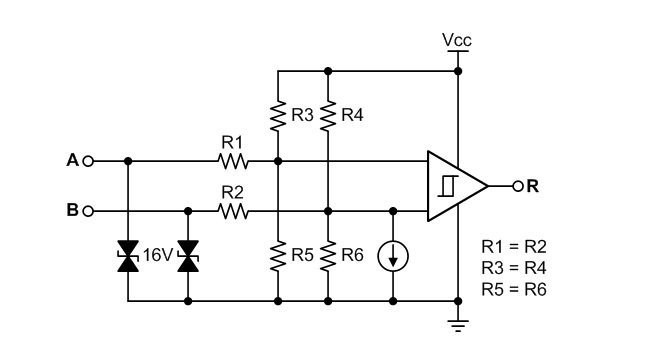Hi,
In receiver mode, if pin A is left unconnected / floating, what's its voltage?
Although I don't see any reference in the datasheet that pin A has a specific voltage in this case, however, I measure it to be around 1.7V, which doesn't seem to be coincidental.
I'm asking because if pin A has a specific voltage when floating, in my layout (and for the intended functionality) it's easier to leave it unconnected and connect only pin B .
Br,
Dimitris



